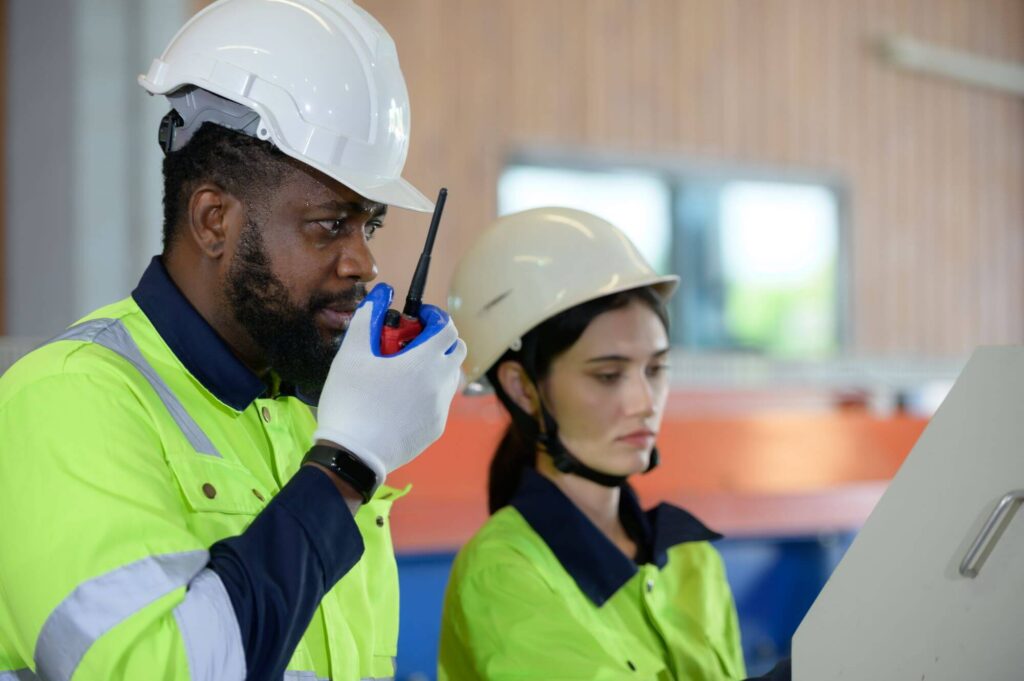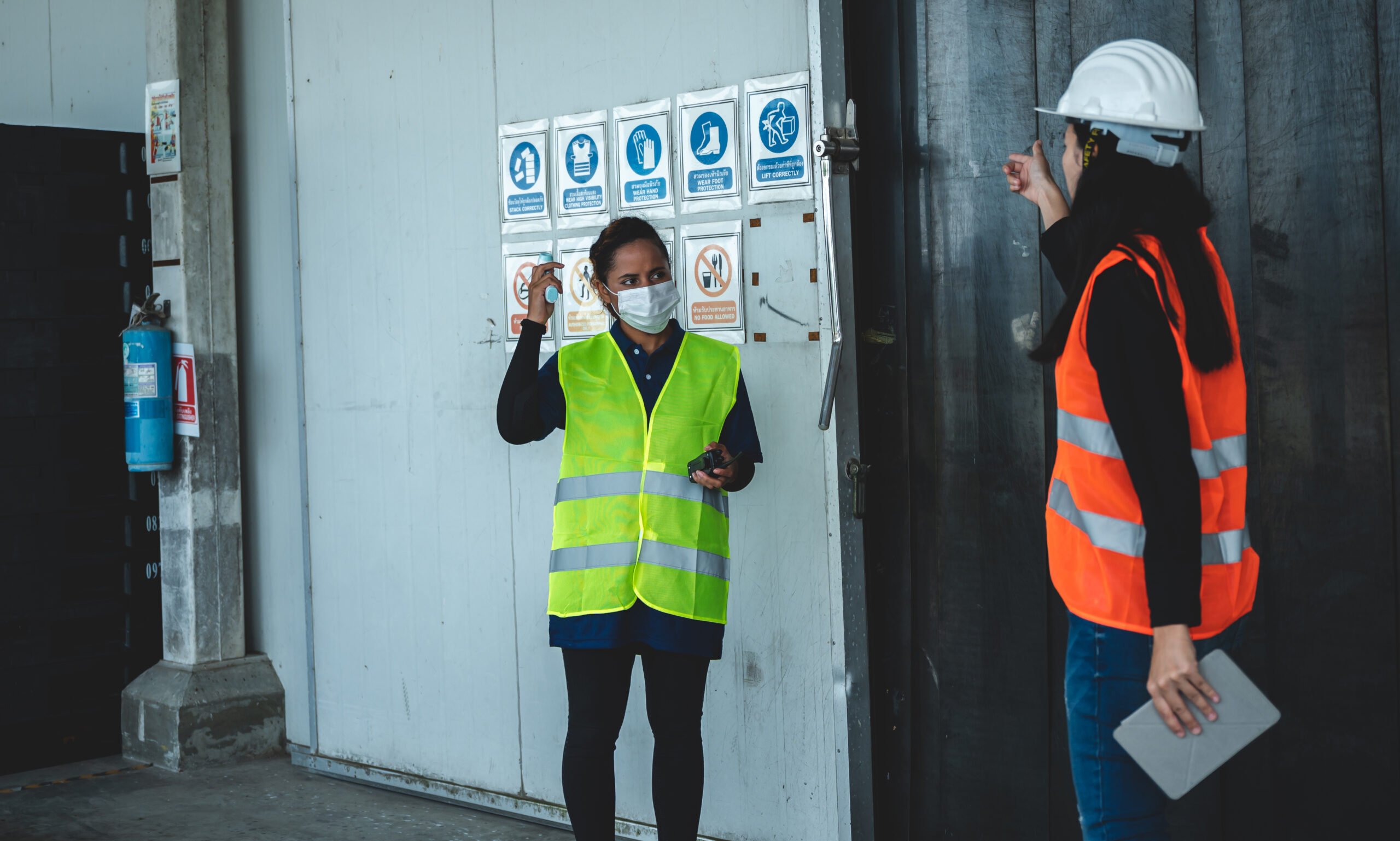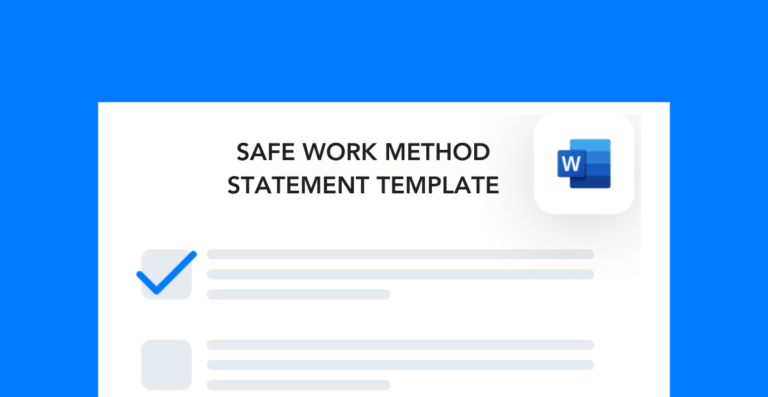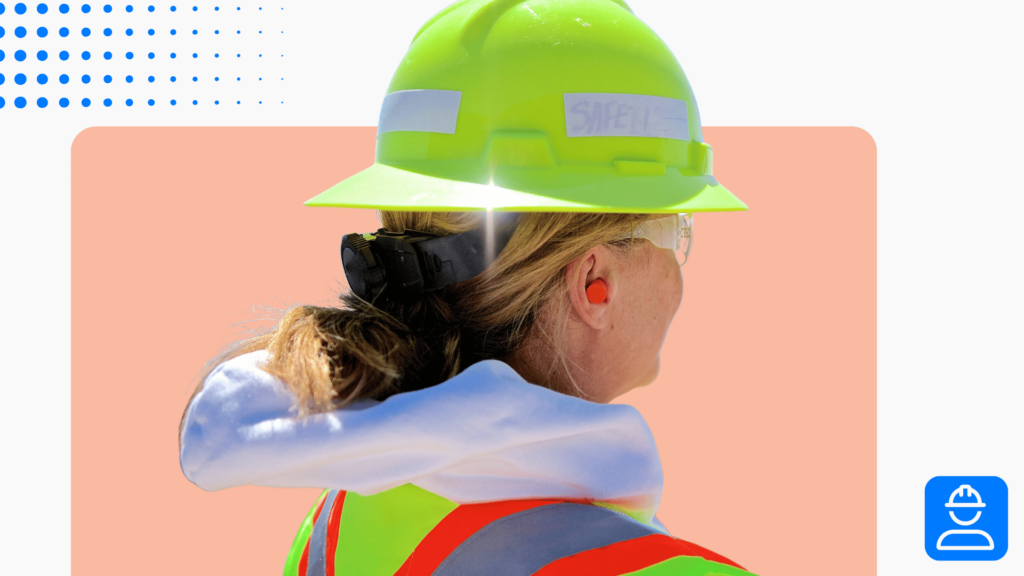Admin safety, also known as administrative controls, is an important element within EHS programs. The purpose of it is to guide worker behavior towards safe decisions and prevent incidents and injuries in the process. Knowing the different types of administrative controls is the first step in implementing effective safety measures that protect your team.
Define Administrative Controls
Administrative controls are measures that change practices in the workplace to eliminate health and safety hazards for employees. They involve things like creating and enforcing better safety policies, improving hazard communication, and implementing security measures.
Like all measures within the hierarchy of controls, these admin safety changes should help create a safer, more productive work environment.

Types of Administrative Controls
The main types of administrative controls include:
- Safety policies and procedures
- Hazard safety training
- Emergency response planning
- Work area signage
- Workplace communication strategy
- Site security systems
A well-rounded EHS program incorporates all these admin safety practices. Here’s an overview of each, so you can identify any areas where your site is lacking.
Safety Policies and Procedures
Your workplace policies and procedures are not meant to be static. You should update them regularly to align with the work your team’s doing.
For example, you might find that introducing a new piece of equipment triggers a change to the PPE requirements for a task. Or maybe you have a major incident onsite, and you change the procedures for a high-risk process.
These changes to your safety policies or procedures are critical controls to implement. Perform (at minimum) a semi-annual review of your safety documents to make sure all the job requirements line up with the safety hazards workers face.
Hazard Safety Training
One of the major types of administrative controls is hazard-specific safety training. Because you can’t eliminate all the process hazards your team faces, it’s important to teach workers how to spot and control issues in real time.
Your safety training program should provide workers with information on how to report hazards to leadership. That’s because your EHS department most likely won’t be able to find and fix all the hazards on their own. Lean on your frontline workers to find, control, and eliminate (where possible) the risks within your processes. Not only does this prevent incidents, but it’s also great for boosting engagement within your safety program.
Emergency Response Planning
Even if you execute your safety program perfectly, emergencies are always possible. That’s why having a detailed and effective emergency response plan is essential.
One thing to note is that your plan should be realistic for your site. Whether you’re following a generic template or writing a plan from scratch, consider how practical it is to execute. Ask yourself:
- Will adding this requirement make the plan more difficult to follow?
- Will this requirement improve the effectiveness of the plan?
- How likely is the team to follow this requirement?
Admin safety is all about simplifying decision making so that safe behaviors are the default behaviors. This applies to emergency situations, as well, especially given how chaotic they can be. The simpler and more straightforward your emergency plan, the more likely your team is to follow it properly in a high-stress situation.
Work Area Signage
Another important administrative control is workplace safety signage. That’s because good communication is at the core of admin safety. Warning signs and other labels you post around your facility help communicate information about the hazards in each area.
Review your site’s signage and look for areas where information needs updating or replacing. And, if you record near misses (like I believe all companies should), then you can probably find a few instances where additional signage might have prevented an incident.
I’d recommend conducting monthly or bi-monthly audits of all the signage in and around your facility. As requirements change or signs wear out, you can replace them on a rolling basis so everything’s up to date.erything’s up to date.
Workplace Communication Strategy
In my experience, there are always ways that a team can improve communication. This is a crucial type of administrative control—as it directly impacts the outcome of audits, investigations, and other safety initiatives.
Here are some ways you can improve communication within your facility:
- Improve your incident management process with EHS software.
- Simplify internal communication so departments can interact with each other.
- Publish a weekly newsletter or email with important safety updates.
- Implement a radio or walkie talkie system (especially for large operations).
Remember, administrative controls don’t have to be complex, expensive, or even impressive. They just have to promote safe behaviors in the workplace. If you have a limited budget or time, start with the easiest measures and work your way towards more involved projects and initiatives.

Site Security Systems
You’ll also want to look at your site’s security system and make sure it prevents external risks out. Hazards like workplace violence and theft are oftentimes preventable with the right security measures in place.
Here are some practices you might consider:
- Install security cameras throughout the building to monitor activity.
- Implement a badge scan sign-in system.
- Require contractors to sign into the facility.
- Restrict certain rooms or work areas by installing keypad locks.
- Require permits for highly hazardous work areas (hot work zones, chemical reactors, etc.)
Security systems are like PPE—they act as a last line of defense against workplace hazards. Don’t forget the impact that workplace culture has on safety. The more supported and protected your workers feel, the less likely they are to commit violence, steal, harass, and otherwise endanger others.
Admin Safety Best Practices
When it comes to admin safety, there are so many ways to protect your workers. Here are some best practices for ensuring the effectiveness of your administrative controls:
- Document all the control measures you implement over time so you can go back and review what worked and what didn’t.
- Never implement a policy you’re not willing to enforce. If you get into the habit of writing rules that no one follows, you’ll create a culture of apathy where workers disregard safety measures altogether.
- Give your EHS department the resources (budget, staffing, time, etc.) to oversee the types of administrative controls you put in place.
- Don’t be scared to retract administrative controls that don’t work or that have unintended consequences. In safety, you should always use data to guide your decisions, even if that means admitting when something you tried didn’t work.
- Audit your admin safety program quarterly or bi-annually to make sure that employees follow the controls and that you don’t have any gaps.
Lastly, don’t underestimate the importance of great communication—the heart of workplace admin safety. Don’t just write a policy and send it to HR. Share it with your team. Discuss why it’s important. Give them a reason (aside from punishment) to follow the control measures your team implements. Your incident prevention program will only be as strong as the participation of your frontline workers.




